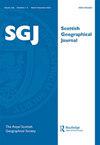卡拉奈神话和东石排与昴宿星的升起和夏至日出时金星的交叉对齐
IF 2
4区 社会学
Q2 GEOGRAPHY
引用次数: 4
摘要
有一个神话声称,在夏至日出时,“有什么东西”来到了卡拉奈斯石的中央环,布谷鸟的叫声预示着它的到来。本文研究了太阳、月亮和金星这三个在日出时很容易看到的天体中,哪一个可能是指的。这些石头与太阳没有明显的方向,虽然在石头环上可以看到仲夏满月的“窗口”,但复杂的月球轨道排除了任何精确的对齐,包括月球静止位置。几个广泛分布的欧洲生育和主权女神都与金星和布谷鸟联系在一起,在北欧的昴宿星是天文学上的象征。卡拉奈斯石的东排与金星的交叉事件对齐。放射性碳定年表明,东排构造期间发生了3次交叉事件。昴星团升起的方位角与公元前1677年和1674年的金星交叉相吻合。在布里顿语gwen中,“某物”是“明亮的,闪耀的,神圣的”,而Gwener是金星。夏至日出时太阳和金星的出现可能代表着一场神圣的婚礼。这被认为是第一个被证明故意与金星对齐的欧洲史前纪念碑。本文章由计算机程序翻译,如有差异,请以英文原文为准。
A Calanais myth and an alignment of the east stone-row with both the rising of the Pleiades and crossovers of Venus at sunrise on the summer solstices
ABSTRACT A myth asserts that at sunrise on the summer solstice ‘something’ came to the Calanais Stones’ central ring heralded by the cuckoo’s call. This paper investigates which of the three celestial objects easily visible at sunrise, the Sun, Moon and Venus, might be referred to. The stones have no obvious orientation with the Sun and, while a ‘window’ of the midsummer full-moons could be seen over the stone ring, complex lunar orbits preclude any precise alignments including the lunar standstill positions. Several widespread European goddesses of fertility and sovereignty were associated with both Venus and the cuckoo, astronomically symbolised by the Pleiades in northern Europe. The east -row of the Calanais Stones is aligned with crossover events of Venus. Three crossover events occurred during the period of the east row construction suggested by radiocarbon dating. The azimuth of the rising Pleiades coincided with the Venus crossover of 1677 and 1674 BC. The ‘something’ was ‘bright, shining, holy’ in Brittonic, gwen, while Gwener is the planet Venus. The appearance of the Sun and Venus at sunrise on the summer solstice might represent a divine wedding. This is believed to be the first European prehistoric monument demonstrated to be purposely aligned with Venus.
求助全文
通过发布文献求助,成功后即可免费获取论文全文。
去求助
来源期刊

Scottish Geographical Journal
GEOGRAPHY-
CiteScore
1.80
自引率
20.00%
发文量
19
期刊介绍:
The Scottish Geographical Journal is the learned publication of the Royal Scottish Geographical Society and is a continuation of the Scottish Geographical Magazine, first published in 1885. The Journal was relaunched in its present format in 1999. The Journal is international in outlook and publishes scholarly articles of original research from any branch of geography and on any part of the world, while at the same time maintaining a distinctive interest in and concern with issues relating to Scotland. “The Scottish Geographical Journal mixes physical and human geography in a way that no other international journal does. It deploys a long heritage of geography in Scotland to address the most pressing issues of today."
 求助内容:
求助内容: 应助结果提醒方式:
应助结果提醒方式:


